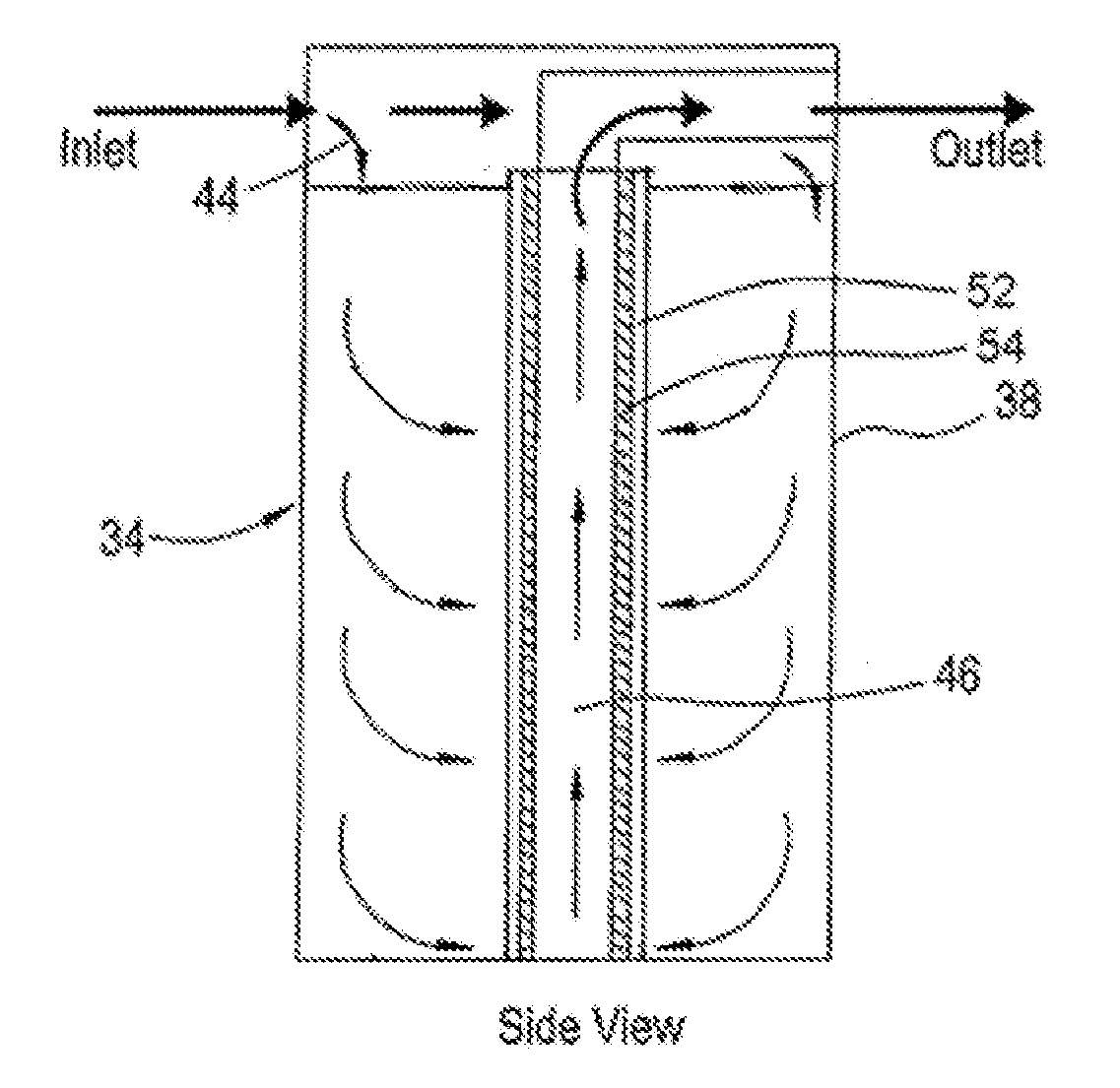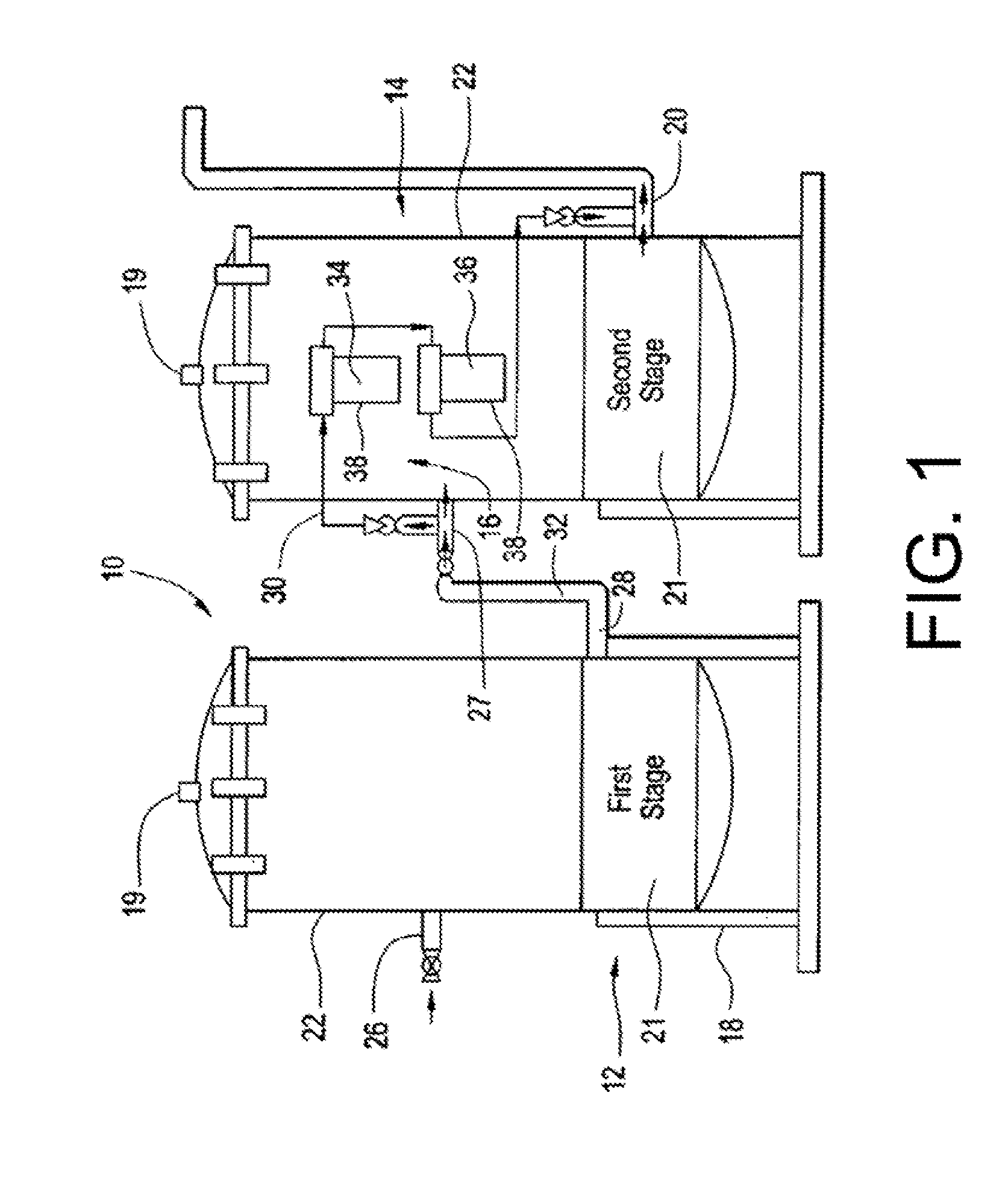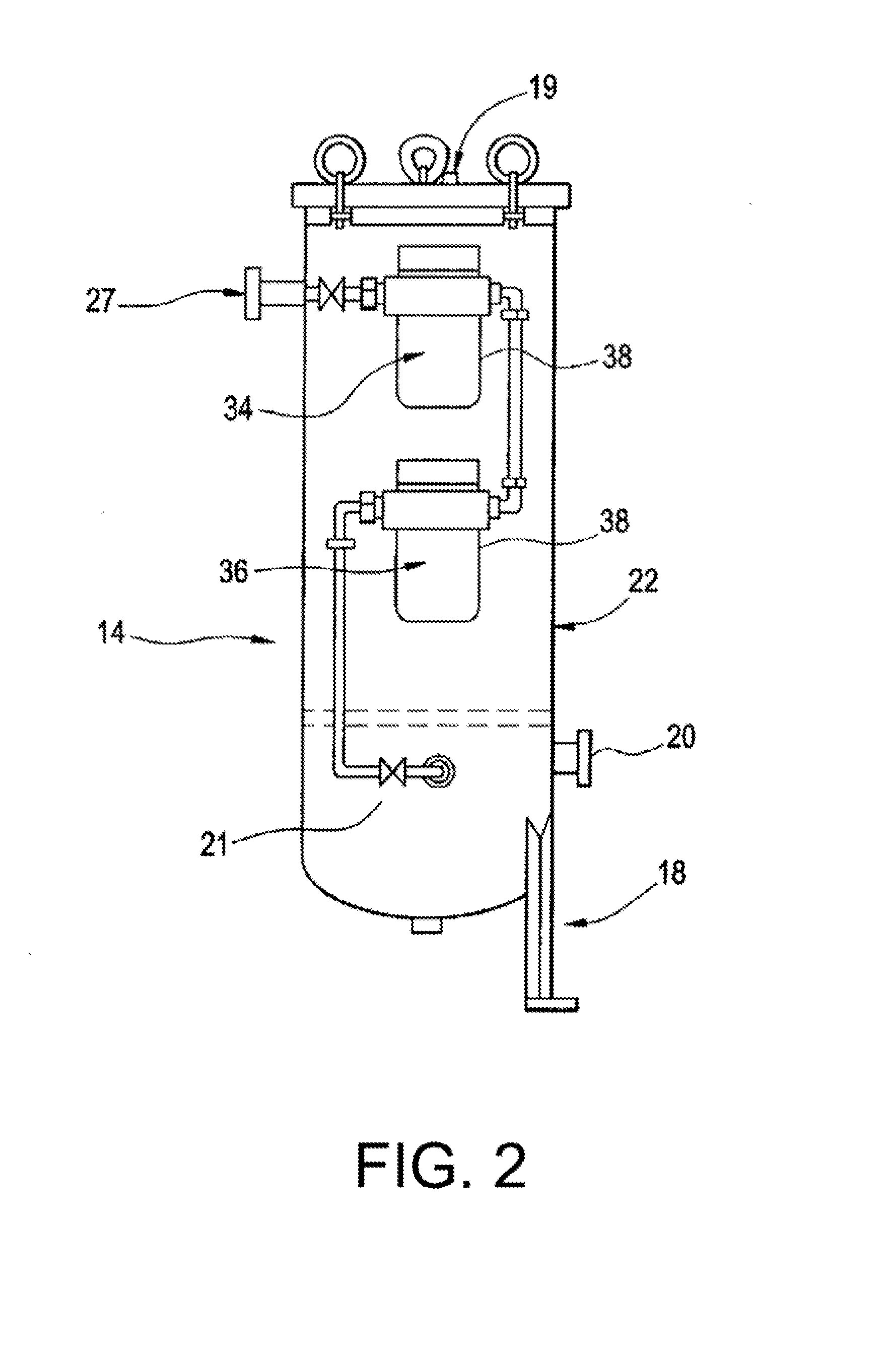Visual Quality Indicator for Gaseous Streams
a visual quality indicator and gaseous stream technology, applied in the nature of treatment water, vessel construction, separation process, etc., can solve the problems of ineffective prior art physical separation methods, formation of stable and pseudostable oily emulsions, and most carcinogenic effects, so as to quickly detect the presence, easy to identify the source or source of leakage, and simple and direct visual inspection
- Summary
- Abstract
- Description
- Claims
- Application Information
AI Technical Summary
Benefits of technology
Problems solved by technology
Method used
Image
Examples
Embodiment Construction
[0038]In preferred embodiments of the disclosure, a visual quality indicator device (“VQI”) is provided for determining the presence of oily contaminants in an aqueous or gaseous stream. The VQI includes a status chamber having an inlet and an outlet for receiving and discharging the stream, and a transparent wall enabling viewing of the chamber interior. A fluid-pervious filtration media is present within the chamber, which has been infused with an absorption composition comprising a homogeneous thermal reaction product of an oil component selected from the group consisting of glycerides, fatty acids, alkenes, and alkynes, and a methacrylate or acrylate polymer component; the contaminant on contact with the media being thereby immobilized. The media has a surface viewable through the transparent wall, and the stream flow path is such as to cause the stream to impinge at the media via the surface, whereby the contaminants collect selectively at said surface and are therefore highly ...
PUM
| Property | Measurement | Unit |
|---|---|---|
| Transparency | aaaaa | aaaaa |
| Fluorescence | aaaaa | aaaaa |
| Phosphorescence quantum yield | aaaaa | aaaaa |
Abstract
Description
Claims
Application Information
 Login to View More
Login to View More - R&D
- Intellectual Property
- Life Sciences
- Materials
- Tech Scout
- Unparalleled Data Quality
- Higher Quality Content
- 60% Fewer Hallucinations
Browse by: Latest US Patents, China's latest patents, Technical Efficacy Thesaurus, Application Domain, Technology Topic, Popular Technical Reports.
© 2025 PatSnap. All rights reserved.Legal|Privacy policy|Modern Slavery Act Transparency Statement|Sitemap|About US| Contact US: help@patsnap.com



